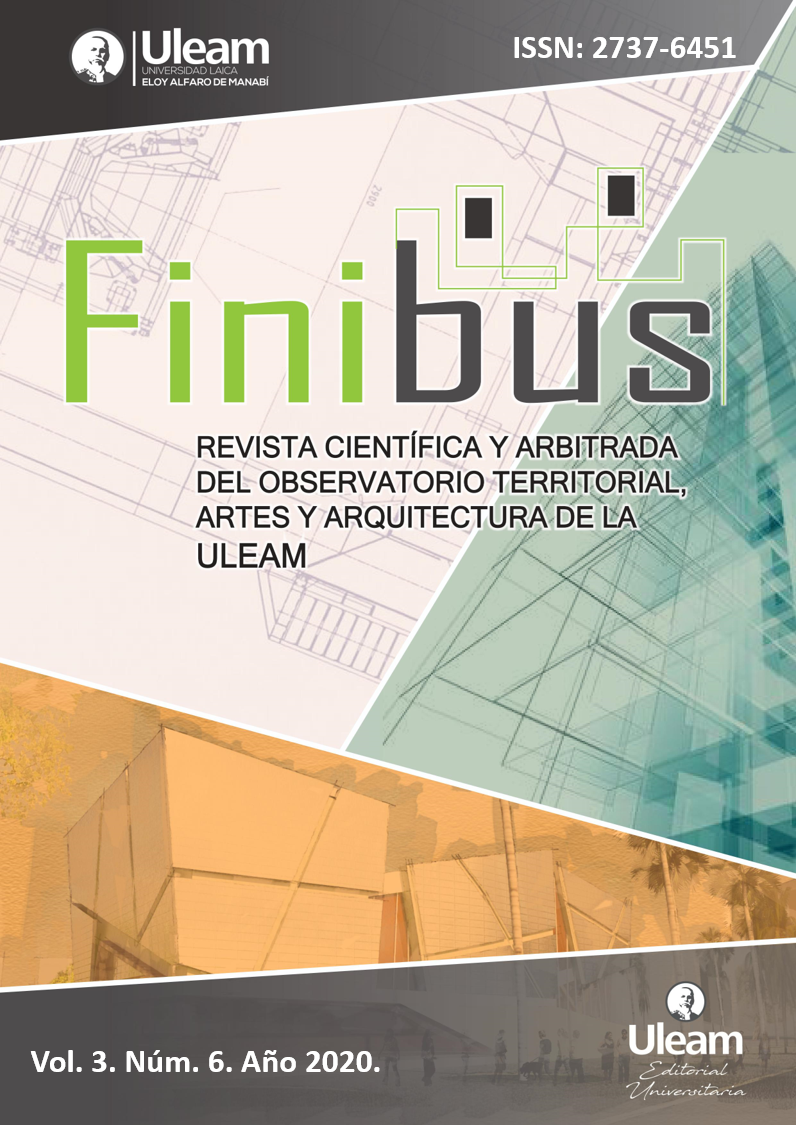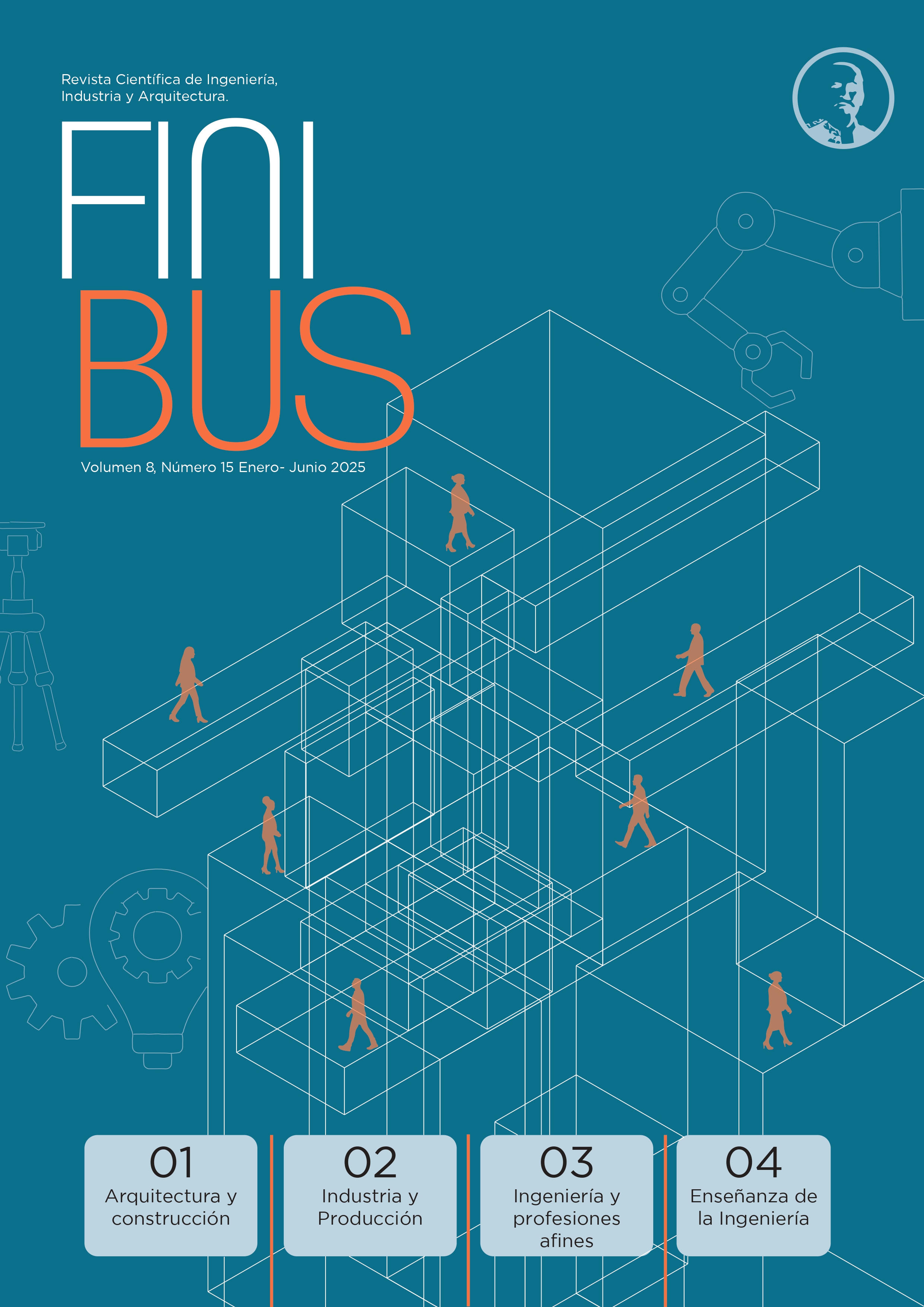Description of the causes that affect the acoustic conditions in classrooms of the Faculty of Architecture of THE ULEAM
Investigation article
Keywords:
reverberation times, analysis, materiality, geometry, classroomsAbstract
The classrooms of the Faculty of Architecture of the Universidad Laica Eloy Alfaro de Manabí (ULEAM) were the object of study in this research, where the acoustic conditions in which they are currently found were analyzed; In general, classrooms have a poor acoustic environment that generates fatigue and tiredness in those involved in the teaching-learning process, these conditions in which it is found are generated by the wrong choice of materials as finishes within the classrooms in addition to factors such as geometry of it. Through direct observation and experimentation, it was possible to determine the reverberation times that occurred in each of the classrooms studied, in addition to questioning those involved through interviews to know the perception that is had first hand. The experimentation showed that the regular geometry found in classrooms is not the most suitable since sound waves tend to bounce off the walls of hard surfaces, intervening in communication, that is, it increases reverberation times, this also occurs by the surface of the materials that the interior has, thus reducing the acoustic quality of the classrooms. References that investigated improvement methods for the spaces were analyzed, treating the finished materials and others, analyzing the optimal way to transmit the message of the issuer.
Keywords: reverberation times, analysis, materiality, geometry, classrooms.
Downloads
References
Ardila, A. (2018). Propuesta de acondicionamiento acústico de la Sala R8-SAL603 de la Universidad Andrés Bello. Santiago de Chile. http://repositorio.unab.cl/xmlui/bitstream/handle/ria/7102/a123197_Ardila_A_Propuesta_de_acondicionamiento_acustico_de_2018_tesis.pdf?sequence=1&isAllowed=y
Duplat, D. (2020). La acústica en la arquitectura interior. En R. Villazón Godoy, & D. Rodríguez Vargas, Sistemas de habitabilidad: principios técnicos del proyecto de arquitectura (pág. 245). EDICIONES UNIANDES-UNIVERSIDAD DE LOS ANDES. https://books.google.com.ec/books?hl=es&lr=&id=fyLtDwAAQBAJ&oi=fnd&pg=PA245&dq=acondicionamiento+acustico+de+aulas+de+clases&ots=LuftShmzz6&sig=0v_GD0jLnEQXnS81h4SlX8C9QJ0#v=onepage&q&f=false
García, M. (2016). Influencia del aislamiento y acondicionamiento acústico en la configuración espacial de un centro educativo de nivel primario en el distrito de Trujillo, La Libertad. Trujillo. https://repositorio.upn.edu.pe/handle/11537/9793
Guzmán, S. (2019). Estrategias para el acondicionamiento acústico interior. Cuenca. http://dspace.uazuay.edu.ec/bitstream/datos/9082/1/14726.pdf
Lozada, A. (2019). Estrategias de acondicionamiento acústico pasivo aplicados en el diseño geométrico de la cobertura del nuevo Arena Indoor de Trujillo 2019. Trujillo, Perú. https://repositorio.upn.edu.pe/handle/11537/22108
Montoya, L. (2018). La forma, la acústica y el revestimiento de materiales en el Auditorio León De Greiff. Bogotá. https://core.ac.uk/download/pdf/226158065.pdf
Montoya, O., & San Juan, G. (2018). Calidad ambiental de las aulas de colegios en el trópico: evaluación subjetiva y objetiva del confort térmico, visual y sonoro. ASADES, 1-5. http://portalderevistas.unsa.edu.ar/ojs/index.php/averma/article/view/1187
Ponce, J. (2019). Implicancias del tratamiento acústico en el proceso de enseñanza-aprendizaje de una universidad de Lima Metropolitana. Lima. http://tesis.pucp.edu.pe/repositorio/bitstream/handle/20.500.12404/14517/PONCE_RODR%c3%8dGUEZ_GRADOS_IMPLICANCIAS_DEL_TRATAMIENTO_ACUSTICO_EN_EL_PROCESO_DE_ENSE%c3%91ANZA_APRENDIZAJE.pdf?sequence=1&isAllowed=y
San Martín, R., Valencia, A., Ezcurra, A., & Arana, M. (2017). Evaluación de las prestaciones acústicas en entornos de aprendizaje: un caso práctico. TecniAcústica, 8. http://mail.sea-acustica.es/fileadmin/publicaciones/AAM-5_011_01.pdf
















